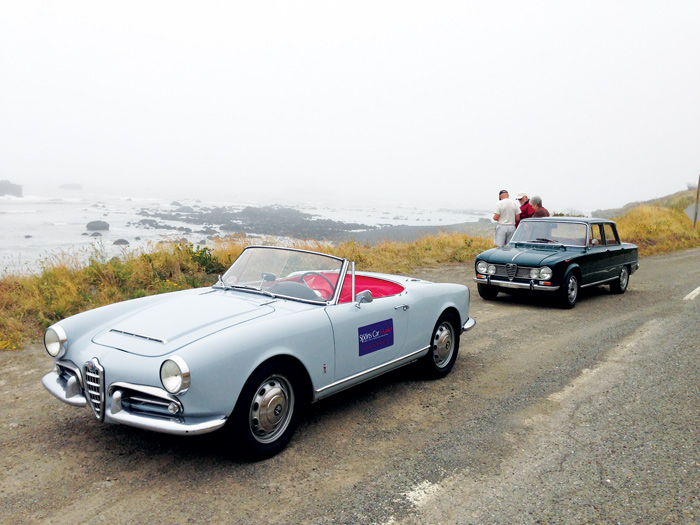
The Alfas are rarely used for daily tasks, they are not left out in the weather, they get regular infusions of fresh, modern, high-quality oil (with the correct zinc content), they are tuned often and anything slightly off is replaced.
In fact, I have started referring to certain repairs, such as engine overhauls, as “lifetime fixes.” Given the 1,500–3,000 miles a year we put on our old cars — and the degree to which we cosset them — an engine should easily last 75,000 miles or 25 years. The odds are that I’ll be tuning up my Veloce walker in 2038, not my Spider Veloce.
The 1600-cc Veloce engine is just getting broken in, having covered around 5,000 miles, and it revved more easily with each passing hour.
Our GPS told us we were traveling between 70 and 75 mph most of the time, which seemed like the sweet spot for the car, with its skinny tires and dated brakes. But we noticed something on the trip that surprised us.
Remember passing?
On every two-lane section of road, we were the only car that was passing anyone. No matter how straight and open the stretches, the cars, SUVs and pickups ahead of us would fall meekly into a single line, and cruise along between 55 and 60 miles an hour.
For us, with our 97-cubic-inch engine — no matter how sophisticated with its overhead cams, dual Webers and tubular exhaust headers — to be moving more quickly than these modern cars was ridiculous.
We passed carefully, always waiting for a long, open stretch, as we didn’t have great acceleration on tap. We also didn’t have the brakes or suspension necessary to make quick, effective emergency maneuvers.
Our road superiority ended the instant we hit I-5. Suddenly, the plodders became the blitzkriegers — accelerating to 85 mph and more, hanging on our tail, passing with wild abandon on all sides, and displaying complete ignorance of road etiquette.
In retrospect, I think Americans have simply forgotten how to drive on two-lane roads. Perhaps the younger generation has never learned.
In earlier times, when the majority of roads were not interstate superhighways, if you drove an imported car with a puny powerplant, you learned to pick your passing spots carefully. You got a running start on the car ahead, and the instant the road was clear, you pulled out and slowly inched past them.
Why bother to pass? Simple. You wanted to have a clear road ahead when you came to the twisty bits — the kind of roads your car was made for — so that you could wring the maximum pleasure out of your trip. Having fun driving isn’t so prevalent today, as cars have become better as machines but worse as passion-inducing devices.
Figuring out which gear you need to be in, at what rpm, as you prepare to pass is an art form unto itself. Knowing how deep you can afford to go into a corner at 75 mph on your 175/170/15 tires requires experience. Doing all this while making sure your oil pressure and temperature gauges, and water temperature reading, are all staying within acceptable limits requires a degree of multitasking.
Today’s drivers also multitask, but generally they are concerned with finding the right XM radio station, making sure their Bluetooth phone is properly hooked up and checking to see if any important texts or emails have come through.
Again, please
Overall, the trip was a 10 on a scale of 1–10. The weather was good, the food and wine excellent, and the company even better. The Alfa used about a quart of oil, never overheated, and simply behaved itself. We only put the top up when we were on the freeway, as the buffeting from large, modern-day cars makes expressway driving a miserable experience.
We learned several things on this trip. First, our mantra: Prepare, prepare, prepare pays off. Before you set out, have your car properly serviced by a specialist, in our case Nasko’s Imports, and do things right — even if that means spending some money. Second, a well-prepared vintage car is a reliable vintage car. These were good cars when they were new, and many of them have now been brought back to “nearly-new” condition. They are comfortable, they can cruise at modern speeds, and they turn tarmac into an amusement ride.
And finally, if drivers of modern cars don’t see the fun in passing on two-lane roads, that’s fine. In fact, I prefer that they lumber along in the slow lane like motorized pachyderms and move over just slightly as our goofy old cars, driven by the guys and girls with the big grins, go whistling by. ♦